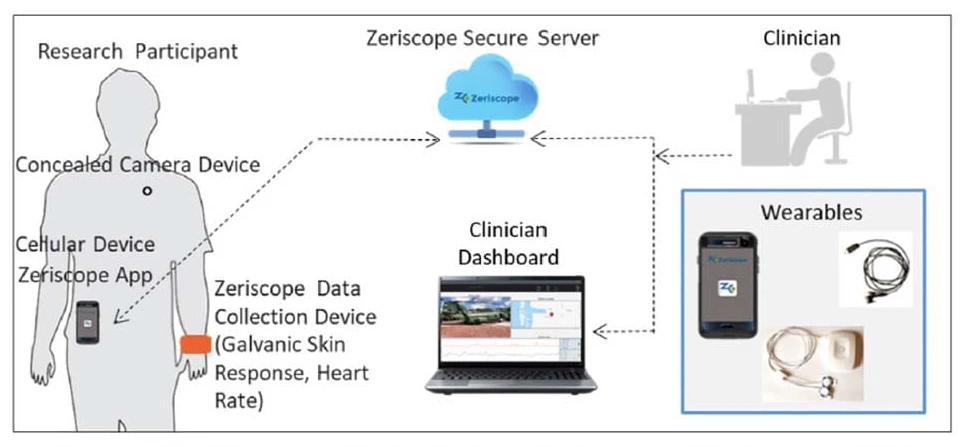When someone is suffering from post-traumatic stress disorder (PTSD), psychiatrists will sometimes have them actually place themselves in stress-triggering environments. An experimental wearable system has now been shown to make such treatment much more effective.
In what is known as prolonged exposure therapy, PTSD patients will spend time in places that are physically safe, but that also make them uncomfortable.
An armed forces veteran whose PTSD is triggered by loud noises, for instance, might go hang around in an arena while a noisy event is taking place. The idea is that over time, the patient will become increasingly less sensitive to such stimuli, to the point that they're no longer a problem.
One drawback to prolonged exposure therapy is the fact that psychiatrists typically aren't able to physically accompany patients while they go to their triggering environments – the travel time and other logistics make doing so too impractical. As a result, patients have to decide for themselves when they've had enough, without any encouragement or objective feedback.
That's where the Bio Ware system is designed to come in.
Manufactured by Medical University of South Carolina (MUSC) spinoff company Zeriscope, it consists of a discrete button-shaped camera (which is attached to the patient's clothing), a Bluetooth earbud, and an electronics module worn on the wrist. Sensors in the latter device monitor the patient's heart rate, rate of respiration, and stress levels (via their galvanic skin response) in real time, wirelessly relaying that data to an app on the patient's smartphone.
The app in turn transmits the data to a secure online server, which the psychiatrist or other clinic-based caregiver can access through a dashboard on their computer. That person is then able to monitor the patient's stress responses in real time, while also viewing their environment and conversing with them via the earbud and the app. In this way they can reassure and encourage the patient, while also ensuring that they're not becoming too stressed.

In a recent study conducted by MUSC scientists, a total of 40 PTSD patients used the Bio Ware system during 10 to 12 prolonged exposure therapy sessions. Half of the participants were guided by a remotely located clinician, whereas the other half were left to interpret the stress data on their own.
While both groups showed a significant reduction in PTSD symptoms, the guided group did particularly well. Larger trials are now being planned.
"If I was guiding somebody, I could see what they were seeing," said Rutger University's Asst. Prof. Tanya Saraiya, who took part in the study when she was an assistant professor at MUSC. "I could see their physiology. I could ask them about their subjective units of distress, or SUDS, in that moment, and also help them do things that are increasingly more difficult. So, go down a crowded aisle or go to a cash register with a person there, instead of avoiding those situations."
A paper on the study, which was led by Prof. Sudie Back, was recently published in the Journal of Psychiatric Research.




